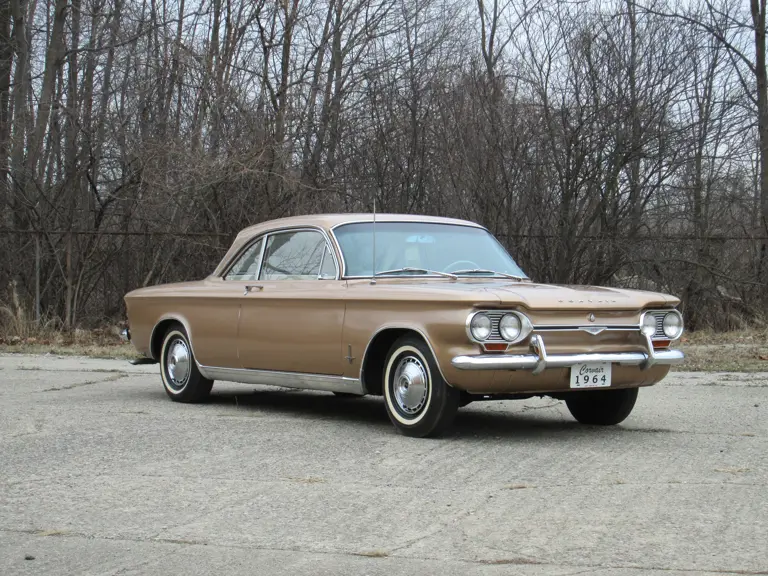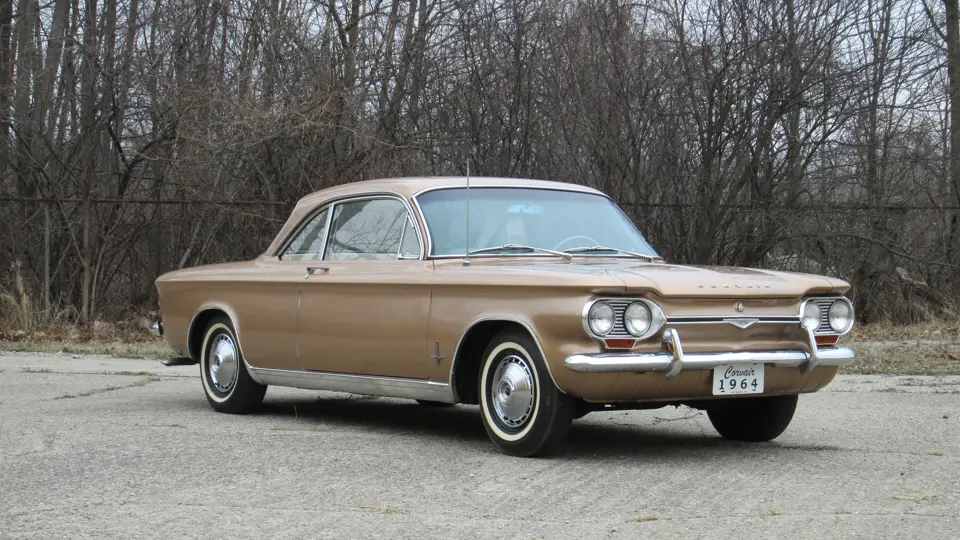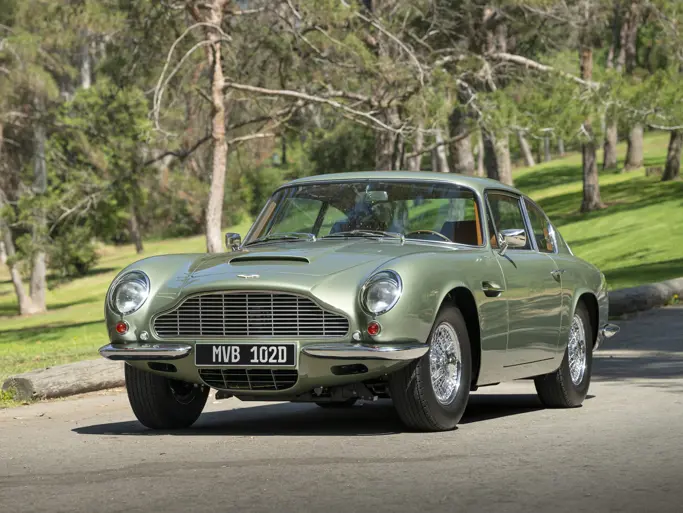During 1959 and 1960, the Big Three automakers planned to introduce their own "compact" cars. Most of these designs were scaled-down versions of the conventional American car, using four- or six-cylinder engines instead of V-8s, and with bodies about 20-percent smaller than their standard cars.
An exception to this strategy was the Chevrolet Corvair. Led by General Manager, Ed Cole, Chevrolet designed a revolutionary new car. The Corvair was powered by an air-cooled, horizontal, six-cylinder engine that was built almost entirely out of aluminum. The engine was mounted in the rear of the car, driving the rear wheels through a compact automatic transaxle. Suspension was independent at all four wheels. There was no conventional frame, it was the first unibody built by Fisher. The tires were an entirely new wide, low-profile design. The styling was unconventional for Detroit: subtle and elegant, with no tailfins or chrome grille. Its engineering earned numerous patents, while Time magazine put Ed Cole and the Corvair on the cover, and Motor Trend named the Corvair as the 1960 "Car of the Year".
The Corvair's sales exceeded 200,000 for each of its first six model years. The rear-engine design offered packaging and economy advantages, providing the car with a lower silhouette, flat passenger compartment floor, removing the need for power assists, and offered improvements in ride quality, traction and braking. The design also attracted customers of other makes, primarily imports. The Corvair stood out, with engineering significantly different from other American offerings. It used GM's Z-body, with design and engineering that advanced the rear-engine, rear-wheel drive layout which had already been seen in other American and European cars such as the Tucker Torpedo, Porsche 356, Volkswagen Beetle, Renault Dauphine and the NSU Prinz.
The Corvair's powerplant was an aluminum, air-cooled, 140-cid flat six-cylinder (later enlarged; first to 145 and then to 164 cubic inches). The first Corvair engine produced 80-hp. Power peaked with the 1965–66 turbocharged 180-hp Corsa engine option. The first generation model's swing axle rear suspension, invented and patented by engineer Edmund Rumpler, offered a comfortable ride, but raised safety concerns associated with the car's handling stability, and was replaced in 1965 with a fully independent rear suspension similar to the Corvette Sting Ray.
The Corvair represented several breakthroughs in design for mass-produced Detroit vehicles, with 1,786,243 cars produced between 1960 and 1969.
This 1964 Corvair Monza Club Coupe was sold new at Wiggins Chevrolet in Lancaster, Pennsylvania. It retains its original window sticker showing the sales price of $2,561and lists its options such as the two-speed, Powerglide Transmission, white sidewall tires, mirrors, windshield washers, tinted windows and deluxe seatbelts.
This is a really clean and well-preserved car that is mostly original and extremely well-cared-for inside and out, top to bottom. It has been repainted once in its original color, but other than that, it is mostly original. It has always been stored inside and serviced as needed. The paint shows some areas of shrinking, mainly on the hood. However, you really have to get up close to notice this. From five to ten feet away, the paint looks like new and has an extremely high gloss to it that presents well from all angles. The chrome and stainless are extremely nice and show hardly any wear. The interior is about as nice as an original interior can be. There is hardly any wear to the seats, door panels, carpets or headliner. The dashboard is excellent and the gauges are nice and clear. All of the glass is clean and the windows roll up and down easily.
The body shows no evidence of any rust damage or repair. The doors, hood and trunklid fit the body well with even gaps and margins.
The underneath of the car is very clean with no evidence of any rust or damage. The chassis has all of its original floor pans, which still retain most of their original paint. The trunk pan is like new. The engine bay is clean and tidy as well.
Included with the car are the original window sticker, as well as manuals and a service book.



 | Auburn, Indiana
| Auburn, Indiana


